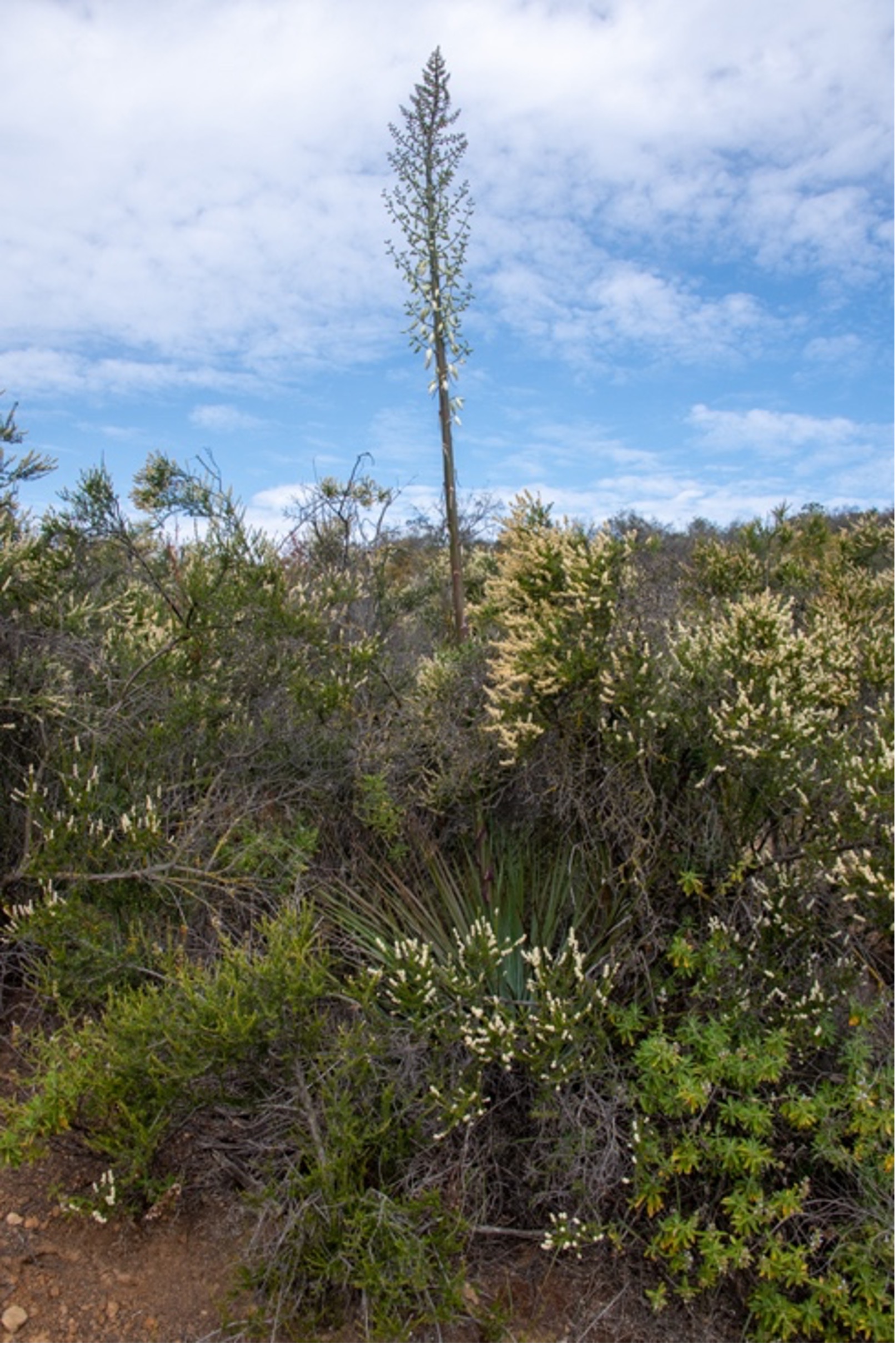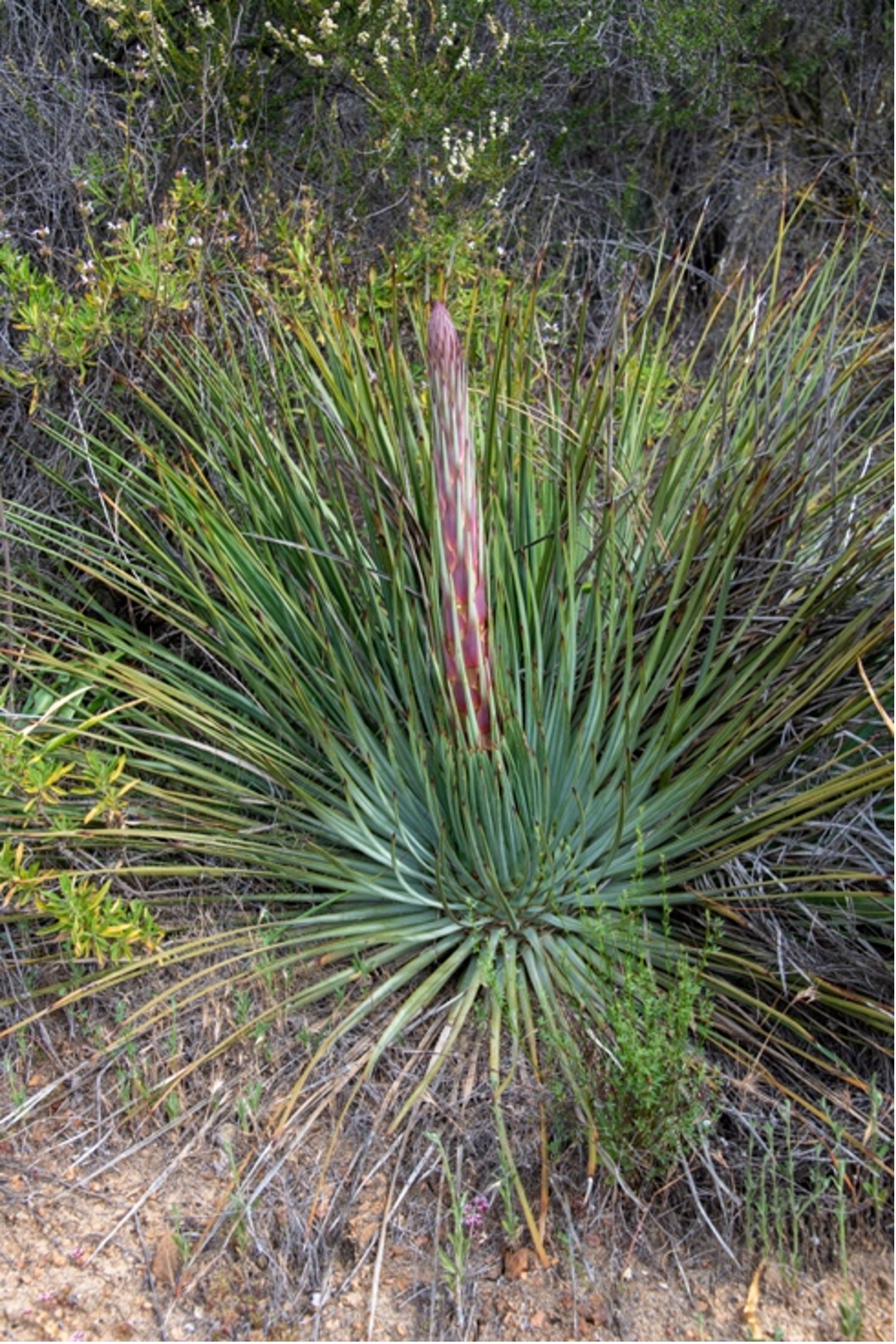


Yucca
Chaparral yucca is a perennial that grows 8-10 feet from a dense basal rosette of stiff, strap- shaped, gray-green leaves. The tough, leathery leaves are one to three feet long, fibrous, and tipped with a sharp spine. The flower stalk grows very quickly, four to six inches (10-15 cm) per day. Chaparral yucca usually blooms between early March and May. Each chaparral yucca flowers only once after which the entire plant dies.
It produces a flamboyant cluster of purple- tinged white flowers atop a long stalk, giving rise to imaginative names such as Our Lord’s candle, quixote plant and Spanish bayonet. Like other yuccas, Chaparral yucca is dependent upon a small moth for pollination. In turn, the moth is dependent upon the yucca to nourish its larva. Neither the chaparral yucca nor its partner moth can adapt and survive in the absence of the other.
Used by many Indian tribes for many purposes, especially for food and for fiber. The fibers in the leaves were used to make thread and rope.
The base of the plant with leaves removed (called the crown, or head, or cabbage) was a “sort of corn, or staff of life to the people”, usually roasted in a pit of coals or hot rocks, overnight or longer, and allowed to cool. The roasted cabbage has been described as “slightly sweet or like bananas”, and as tasting ” like baked apple”.
